When I was studying for my PhD back in the late 1990s, I read an article trumpeting the ‘next big thing’ in food. To be honest, the next big thing didn’t sound very appetising. Apparently, within the next decade or so, we would all be eating beetle burgers.
Entomophagy, eating insects, is common in many parts of the world. Given the ethical problems of farming livestock, insect farms were, the article boldly declared, the future of food.
Raised without welfare issues, insects are excellent at converting foodstuffs we can’t use into protein that we can. What’s more, they require far less space than livestock and contribute far less greenhouse gases than cattle.
But despite some clear advantages, a quarter of a century later diners in the developed world still aren’t feasting on flies or baking with beetles. The reason for this is obvious: while more than 1,000 species of insects are eaten around the world, most commonly in the tropics, Western societies generally don’t eat ‘bugs’.
As the bushtucker trials of I’m a Celebrity Get Me Out of Here demonstrate, insect-eating is an idea many people find disgusting.
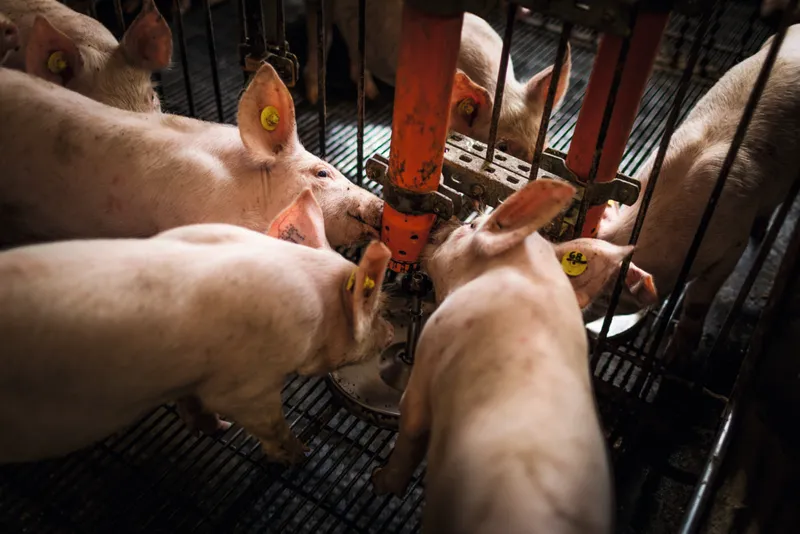
Articles extolling the virtues of entomophagy continue to appear frequently in the media. And although the headlines often play on the perceived shock value, the authors are increasingly focussing on the ethical and climate-friendly aspects of insect farming.
Look beyond the ‘Locusts for starters’ headlines, and you’ll soon see that insects are already well-placed to play a more important role in our food chain. Rather than us chowing down on fried locusts with a mealworm side-salad, we’re developing ever-better ways to use insects: as food for the animals we prefer to eat.
Insects could be a protein-rich game changer
A major star of this insect animal feed revolution is the black soldier fly (Hermetia illucens). Only around 16mm (approximately 0.5in) long, the adult flies resemble small solitary wasps. This mimicry is just evolutionary trickery however, because soldier flies have no sting and don’t bite either.
A widespread species, it’s their larvae that are key to the black soldier fly’s importance. This is because black soldier fly larvae are ‘non-selective’ feeders, which is a polite way of saying that they’ll eat almost anything.
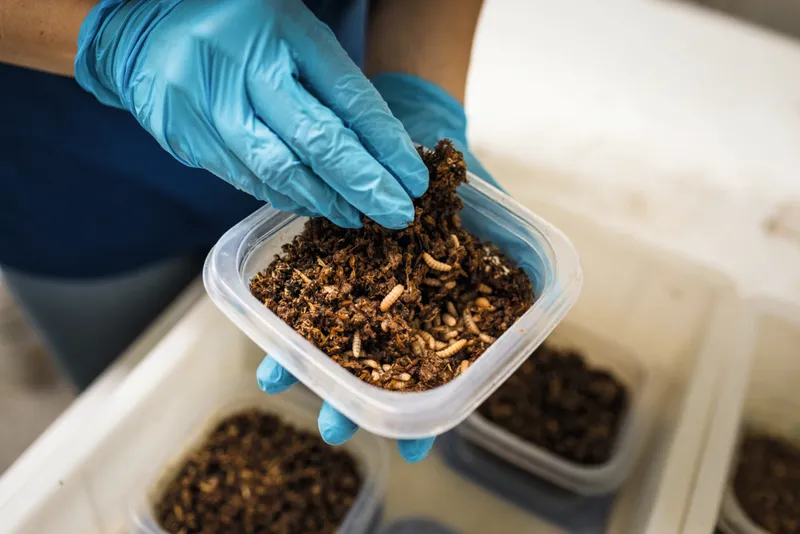
They thrive on all manner of food stuffs, from manure to animal and vegetable food waste – a characteristic that makes them excellent for waste disposal. This alone makes the black soldier fly useful to us, and that’s before we even get to turning them into animal feed.
The waste-disposal process is called ‘ento-remediation’ and uses large chambers called bioconvertors that house large numbers of black soldier fly larvae. These larvae consume food and other organic waste and, in so doing, produce a soil-like organic residue that can be used as a rich fertiliser.
Inside the bioconverter, the larvae grow rapidly and 50 per cent or more of the weight they put on is protein. When they reach the pupal stage (the stage when they undergo metamorphosis to turn into an adult fly), they’re at their nutritional peak. At this point, after they’ve already been useful converting waste into fertiliser, they can be harvested and used to feed animals.
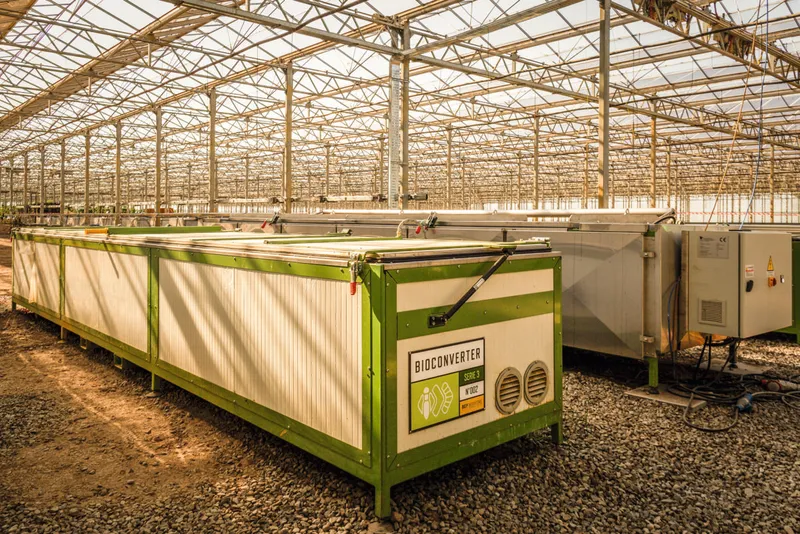
Insect animal feed can replace conventional animal feeds that often rely on soybean meal. Soy has a high environmental cost because of the land and water required to grow it, and the resources needed to transport it.
Although much of the work on animal feed production has focussed on feeding livestock like pigs and chickens, black soldier flies are also being looked at as a food source for farmed fish. Currently, farmed fish food often consists in large part of fishmeal. Fishmeal, also used to feed livestock, is made by drying and grinding fish.
While this can be a good use of the parts of fish that we don’t eat, and of bycatch that can’t be returned to the sea, fishmeal production can encourage overfishing and depletion of vulnerable marine ecosystems.
Being able to replace fishmeal with sustainably farmed insects could be a game changer for key aspects of marine conservation.
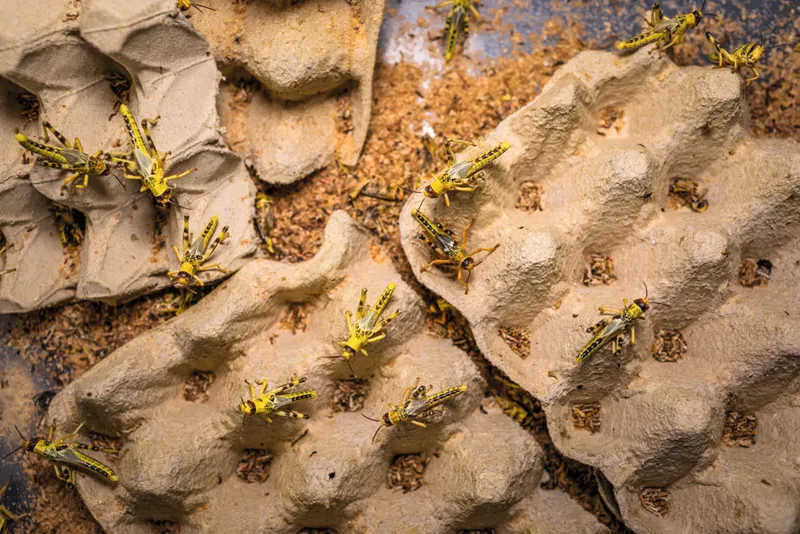
From pet food to people food
Black soldier flies aren’t the only species being farmed for animal feed, however. Some locust species can be bred very successfully and are relatively easy to maintain.
Because insects are small and don’t require much space, it’s possible to keep them in tightly controlled conditions to optimise their growth and reproduction. People who keep reptiles will likely be familiar with the house cricket (Acheta domesticus). This pale brown cricket is widely cultivated for feeding pets, but is being looked at as a potential source of protein for farm animals.
These insects could also end up as a more direct part of our diet. The Italian Cricket Farm, in Turin, Italy is investigating the potential for crickets to be processed into protein-rich ‘insect flour’ that can be incorporated into our food. Currently awaiting European Food Safety authorisation, it’s exactly this sort of processing that may provide the culturally acceptable way for insects to enter our diet.
In fact, crickets can be rather good to eat without processing them into flour. I ran an insect-eating workshop at the Cheltenham Science Festival some years ago, and a local chef prepared a series of dishes for people to try. Brown crickets between sage leaves, deep-fried in a beer batter were a nibble that people tried first out of curiosity, but then came back to for seconds because they were so delicious.
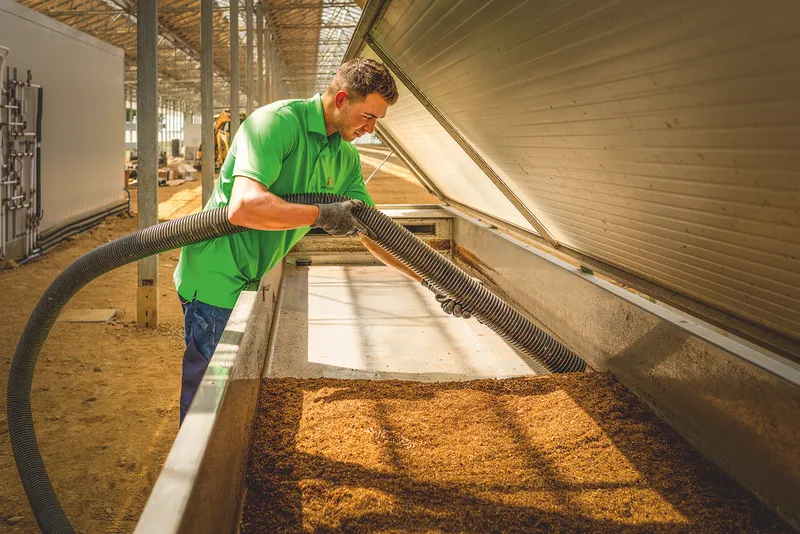
The Italian Cricket Farm produces about 200,000 crickets a year, although this could be scaled up relatively easily. The efficiency of cricket production is impressive. Every 1kg (2.2lbs) of crickets requires just 1.7kg (3.7lbs) of feed to produce. When you compare that to the 10kg (22lbs) of feed required to produce 1kg of beef, the advantages become obvious.
What’s more, the end product is incredibly nutritious, containing twice as much protein as beef, as well as a wide range of vitamins, minerals, fatty acids and other nutrients.
Changing tastes and ethics
As with any new and emerging ideas in food production, we need to be careful to think through any potential disadvantages.
Clearly, what an animal eats can affect the quality of the meat it goes on to produce. Research into this is ongoing, but so far the data suggests that while insect feeds can affect the fatty acid content of meat, these changes are neither detrimental nor noticeable in terms of taste.
Another key issue that needs to be thought through is the ethics of farming insects. The ethical concerns of animal use are complex and change as society and our scientific understanding changes.
Over the past decades we’ve seen the introduction of far higher welfare standards for livestock farming than would have been thought necessary in the past, although many would argue that we still have a long way to go.
These welfare advances have been focussed mainly on mammals, with a secondary focus on poultry, and far less focus on fish. Insects, however, haven’t really featured at all in our ethical discussion of animal use.
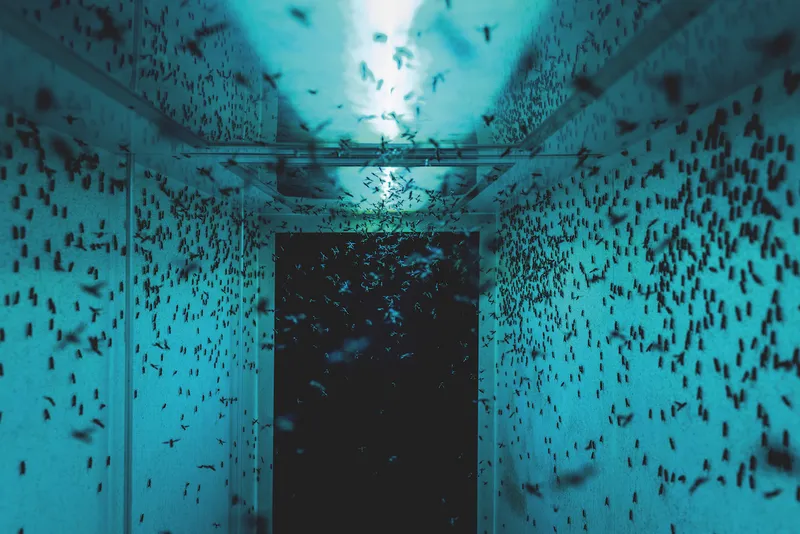
Indeed, we’ve tended to think of insects as being incapable of feeling pain or suffering. But these views are beginning to shift.
We’re starting to learn more about the internal world of insects and discovering that they may be capable of feeling something we might identify as pain. It’s an emerging area of study, but in many cases the conclusions are that we might have to reconsider how we think about insects.
That said, I think it’s very unlikely indeed that we’ll shift our view to such an extent that insects will ever be afforded the same welfare measures as ‘conventional’ livestock. The greatest advantage of using insects for food, both directly and via animal feed, is environmental.
Dredging oceans for fish meal or growing soy for protein feed are environmentally harmful, associated with high carbon costs and habitat loss or degradation.
On the other hand, rearing insects has the potential for a far lower environmental footprint. They take up less space, use less resource to produce more protein, can take advantage of human-produced waste and don’t rely on exploiting or replacing habitat.
Cranefly cakes and locust loaves might not be on your plate any time soon, but insect-reared pork, chicken and beef may well be. Perhaps that article 25 years ago was onto something, after all: insects might really be the future of food.
Read more:

